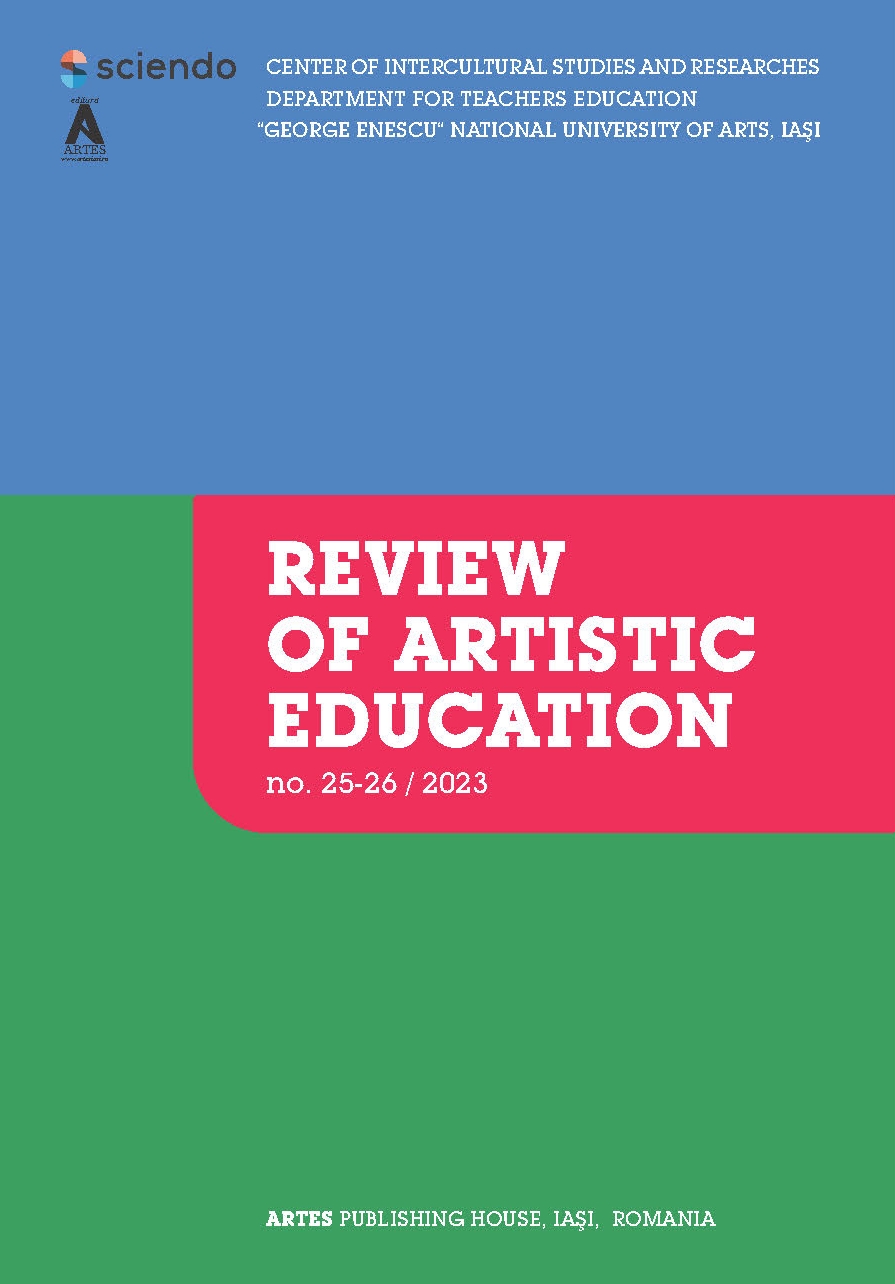ARTISTIC EDUCATION AND CREATIVE ART-THERAPY
ARTISTIC EDUCATION AND CREATIVE ART-THERAPY
Author(s): Felicia CeaușuSubject(s): Education, Visual Arts, Individual Psychology, Psychology of Self
Published by: Editura ARTES
Keywords: artistic education; art-therapy; creative art-therapy; occupational therapy; therapeutic methods;
Summary/Abstract: As for the phrase "artistic education", in this paper work, it was used in the way of cultivating individual, authentic artistic talent, of acquiring individual skills, abilities and techniques, with the aim of training artists in different fields of arts, as well as the assimilation of theoretical and practical knowledge from the fields of theory, aesthetics, criticism and history of arts etc., adapted to natural, innate capacities with a view to non-verbal creative expression and development plastic expressiveness. Art education and art therapy have in common the fact that they are forms of applications of art that integrate theories and practices of art pedagogy in a supportive environment: museums, art galleries, ambient art - street or interior - nature, classrooms or creative studios, where artists use the influences offered by the environments specific to the practice of the arts, which by their pluri/inter/trans-disciplinary character, encourage freedom of creation, thought, expression and imagination. Being "postmodernist" in art therapy, as Shirley Riley sees it, assumes a renunciation of programmed knowledge. For the art therapist it is essential to become the "student" of the client and to "learn from each client the meaning of the situation that he brings". Through "co-constructive" therapy with the client, the art therapist becomes a collaborator in the therapeutic activity. Art therapy, as a component of occupational therapy, aims to correct the consequences of the disease that caused the disability or handicap, the development of adaptive skills, so that a person with a certain degree of incapacity can make the most of his or her remaining potential, in order to recover (both at family and professional level), by integrating into a useful activity at the highest level accessible to him. The therapeutic methods of the current era experiment with ways specific to each art, to achieve interdisciplinary exchanges. They connect to disciplines such as psychology or psychiatry, anthropology, history, religion, to experience the primary therapeutic values of contemporary art.
Journal: Review of Artistic Education
- Issue Year: 2023
- Issue No: 26
- Page Range: 236-241
- Page Count: 6
- Language: English
- Content File-PDF

